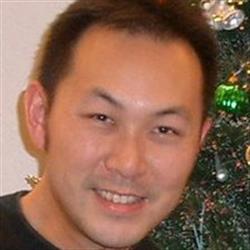We want to explore sustainable & creative colour, style
Mou Fung, a well-established denim mill in Hong Kong since 1970, produces denim fabric for casual wear and luxury labels. Managing director Raymond Lau speaks to Fibre2Fashion about how his company is incorporating the concept of sustainability during denim fabric production at the mill and the future trends of the denim market.
How different are denim fabrics today as compared to those manufactured 10 years ago?
Other than the style and function of the denim fabrics, nowadays sustainable production footprint is the main concern of all brands and consumers and the biggest challenge for production plants.
Which are your major geographical markets for denim fabrics? Which new ones do you plan to explore?
Our main markets are the United States, Europe, Australia and Japan. We would like to explore the Chinese and Russian markets.
Which weaves and finishes are evergreen? What new weaves and finishes are you working on?
3/1 Z twill is an evergreen one. We are working towards sustainable finishes that use less water and have soft hand feel.
What are the trends for S/S 20 for the premium denim segment?
The trend is various colour denims produced through sustainable production methods.
The textiles industry is considered to be a huge pollutant, and denim perhaps among the most. How do you try and keep the carbon footprint low?
That is always the biggest challenge to us, to balance the cost of all environment-friendly raw materials and a sustainable production process, which somehow no one is willing to pay extra for to save the world. That is why we are in continuous search for sustainable production ways.
Denim in its original form-the hard-working fabric-has undergone many blends making it softer and more fashion oriented. How do you view this change?
Denim is one of the most fashionable fabrics that allows so many possibilities due to colour depth and laundry washes that can be applied to it. The fashion trend is the key to create the look and feel in denim, not necessarily always sticking to soft hand feel; even less washing might be required to adjust to the different themes and trends in jeans.
How can we make sustainability in fashion more accessible? What are you doing to help facilitate that?
At first, we identify the different types of sustainable raw materials or processes suitable for denim. There are so many so-called sustainable materials but only few are economically workable to produce denim.
What kind of dyeing methodology do you implement? Are the products difficult to maintain?
The spray dye technology we have been working with lately is one of the most sustainable dyeing methods. With its minimal consumption of water, the dye only needs chemical treatment and comes in different colours.
Do you think the denim market in Asia particularly in countries like China, is developing at par with the rest of the world? What future do you foresee?
Since the US-China trade war started more than a year ago, challenges in textile production in China is already being ironed out compared to other Asian countries.
What is the annual production capacity at Mou Fung?
Our annual capacity is 20 million yards.
What amount of denim fabric produced at Mou Fung is sustainable?
It depends on how you see the term sustainable. We are the first one in China to apply indigo solution in 2000, and thus committed to 100 per cent usage of sustainable indigo for dyeing for the last 20 years. At the same time, most of our competitors are using powder or have only partly adopted such kind of dyeing methods due to the cost factor.
What new denim technologies and innovations do you plan to implement?
Sustainable and creative colour, style and structure are the issues that we want to explore for denim fabric in future.
How was the going in the last two fiscals and what is the target set for 2022?
The sales for the last two years were not good due to many known and unforeseeable reasons. Our target for 2022 is to bring our usual production volume back on track. We are not looking for multi-million production anymore as this will turn to intensive price-driven situation. We want to shift our focus to boutique type production.
Do you have plans to expand your current capacity or introduce new products in the near future?
We do not want to expand our current capacity. Instead, we want to focus on introducing efficient machinery that can provide great and interesting product features.

